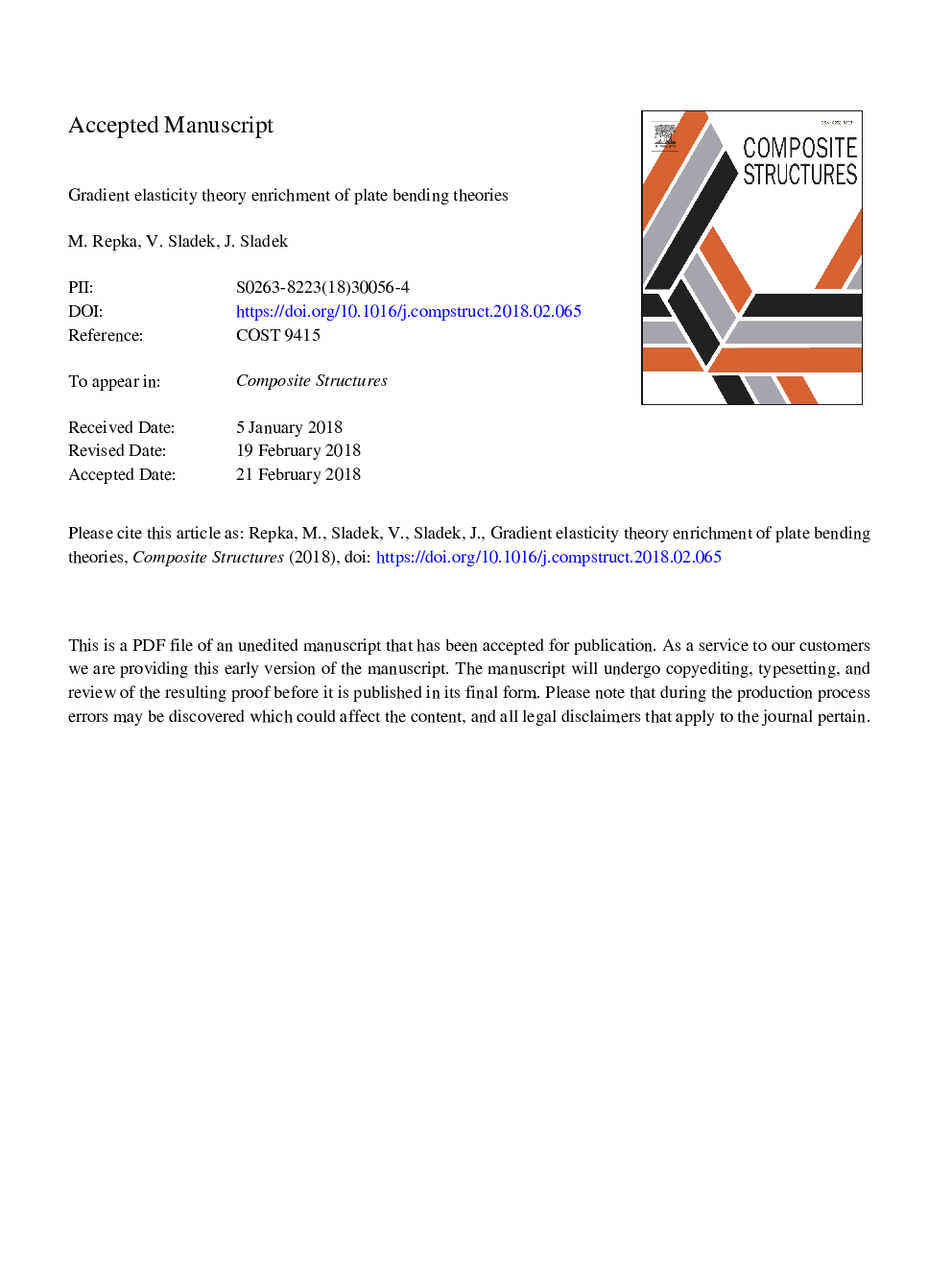| Article ID | Journal | Published Year | Pages | File Type |
|---|---|---|---|---|
| 8959939 | Composite Structures | 2018 | 23 Pages |
Abstract
The influence of microstructure on macro-structural plate bending is incorporated into plate bending theories by replacing the classical elasticity theory by strain gradient elasticity. The microstructure is represented by gradients of macro-strains and one new material coefficient which is called the micro-scale length parameter. The strain gradients can be introduced either in the non-symmetrized or in the symmetrized formulation. Though the former is physically inconsistent, both these formulations are considered and compared in numerical simulations. The governing equations as well as boundary conditions are derived from the principle of variations applied to unified formulation of plate bending with assuming the assumptions of the classical thin plate bending theory (Kirchhoff-Love theory) and/or the shear deformation plate theory of the 1st and 3rd order (FSDPT and TSDPT). The derived formulation is applicable to FGM (Functionally Graded Material) plates, since the gradation of Young's modulus is allowed in both the transversal and in-plane directions. Some numerical examples are considered in numerical simulations, in order to illustrate the influence of microstructure on the behavior of macro-structural plate subjected to static transversal loading.
Related Topics
Physical Sciences and Engineering
Engineering
Civil and Structural Engineering
Authors
M. Repka, V. Sladek, J. Sladek,
